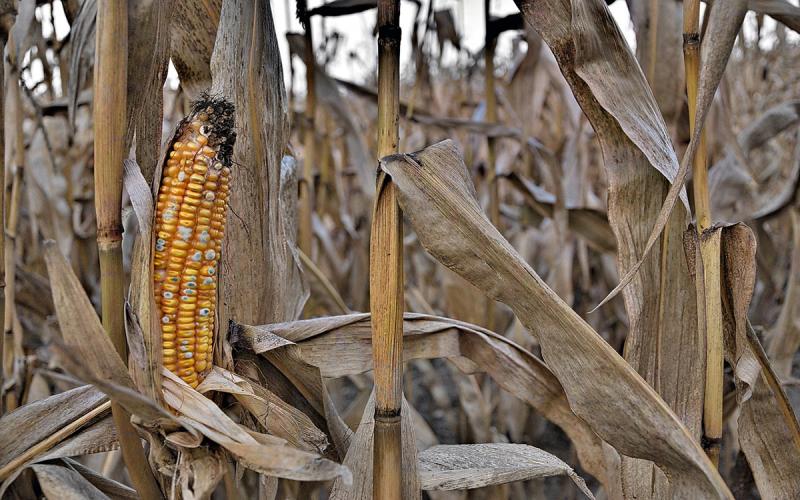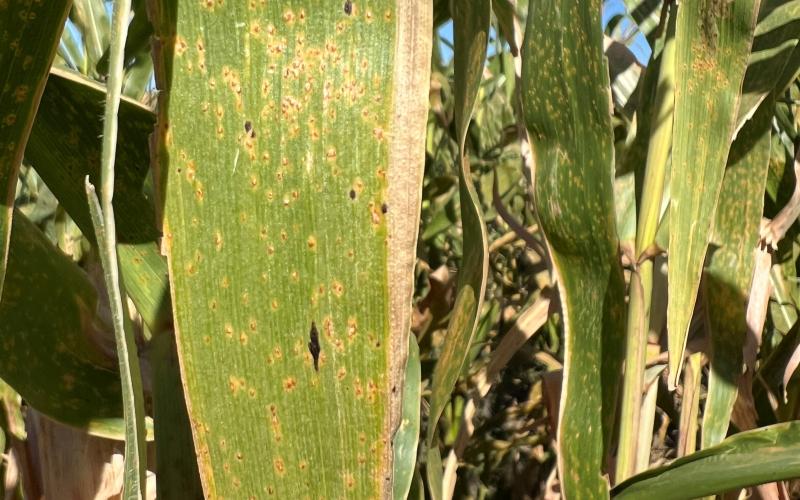
Originally written with contributions by Emmanuel Byamukama, former SDSU Extension Plant Pathologist.
Crazy top disease was observed in a few fields in the Southeast counties in the state. Crazy top is an Oomycete disease caused by Sclerophthora macrospora. It is not a common disease on corn in South Dakota but occasionally it shows up. Usually a scattered few corn plants at the edge of the corn field are affected. Symptoms of crazy top depend on the time of infection.
The most common characteristic of this disease is proliferation of the tassel where, instead of a normal tassel, a mass of leafy structures develops (Figure 1-A).
Sometimes infected plants may a tiller where an ear would have developed and may have abnormal tillers develop from the base of the stem and upper nodes (Figure 1-B). Leaves of severely infected plants may show chlorotic striping (Figure 2).

The crazy top pathogen survives in the soil as oospores. These germinate into sporangiospores. It is the sporangiospores that produce zoospores and the zoospores are the infecting spores. The zoospores swim in a film of water and infect young developing corn plants. This disease develops in corn that is flooded or under full water saturation when corn has not reached the four-to-five leaf stage. Inoculum can also come from infected grasses at the edge of the corn field.
This disease can be effectively managed by improved drainage or avoiding planting in low, wet spots of the field. Pulling out infected plants and discarding them will also reduce inoculum in the subsequent seasons.


